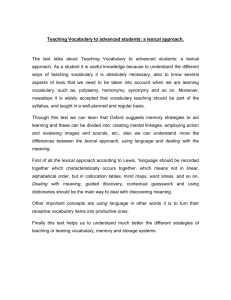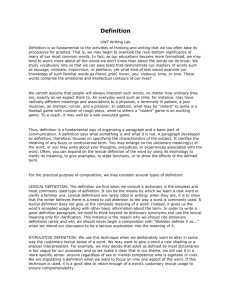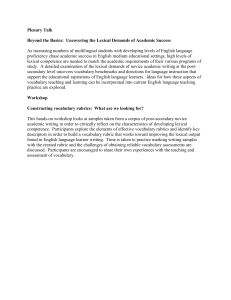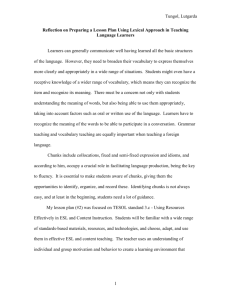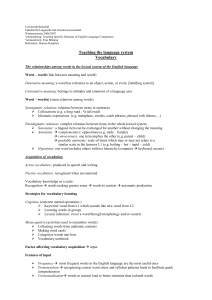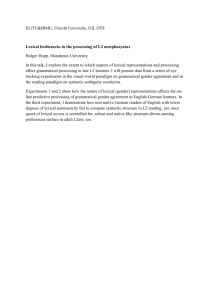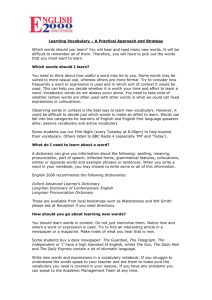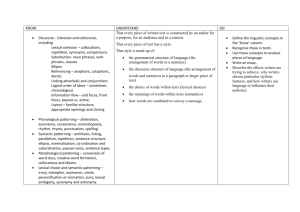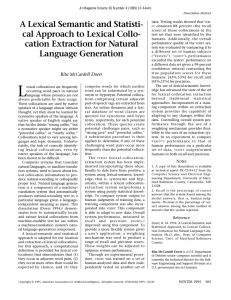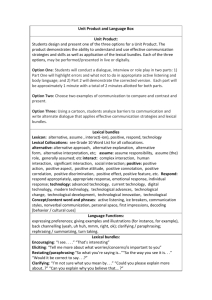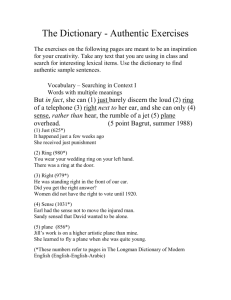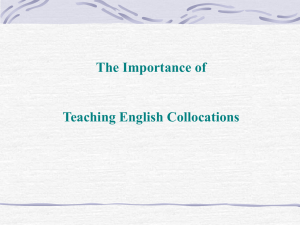FQV Vocabulary Building for Academic English
advertisement
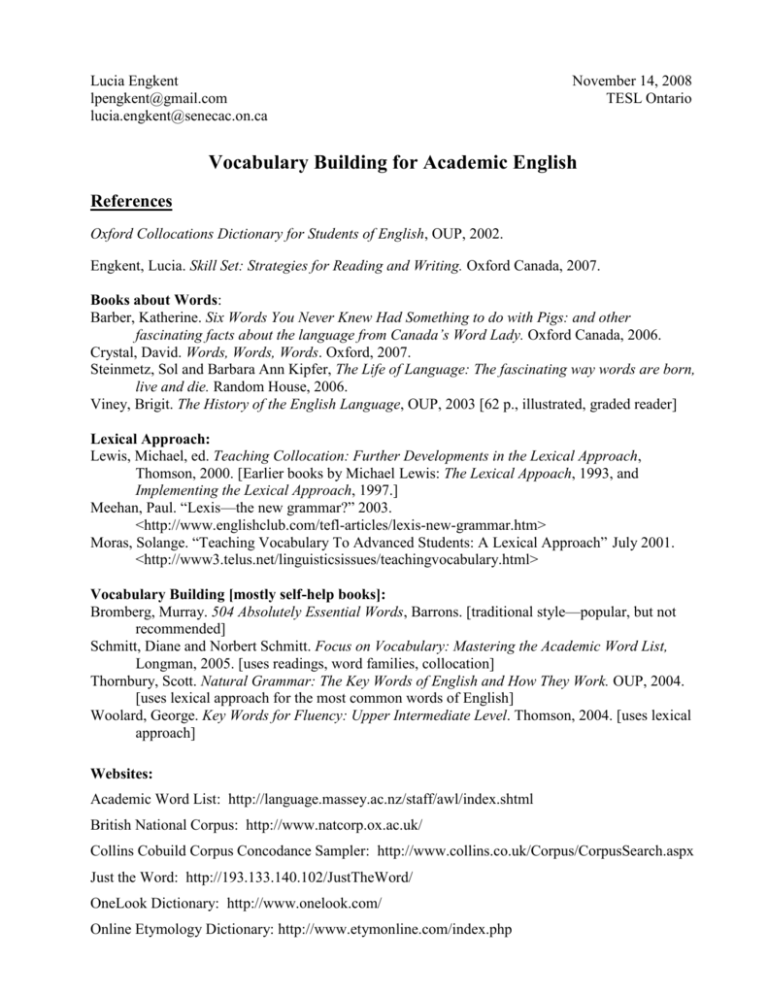
Lucia Engkent lpengkent@gmail.com lucia.engkent@senecac.on.ca November 14, 2008 TESL Ontario Vocabulary Building for Academic English References Oxford Collocations Dictionary for Students of English, OUP, 2002. Engkent, Lucia. Skill Set: Strategies for Reading and Writing. Oxford Canada, 2007. Books about Words: Barber, Katherine. Six Words You Never Knew Had Something to do with Pigs: and other fascinating facts about the language from Canada’s Word Lady. Oxford Canada, 2006. Crystal, David. Words, Words, Words. Oxford, 2007. Steinmetz, Sol and Barbara Ann Kipfer, The Life of Language: The fascinating way words are born, live and die. Random House, 2006. Viney, Brigit. The History of the English Language, OUP, 2003 [62 p., illustrated, graded reader] Lexical Approach: Lewis, Michael, ed. Teaching Collocation: Further Developments in the Lexical Approach, Thomson, 2000. [Earlier books by Michael Lewis: The Lexical Appoach, 1993, and Implementing the Lexical Approach, 1997.] Meehan, Paul. “Lexis—the new grammar?” 2003. <http://www.englishclub.com/tefl-articles/lexis-new-grammar.htm> Moras, Solange. “Teaching Vocabulary To Advanced Students: A Lexical Approach” July 2001. <http://www3.telus.net/linguisticsissues/teachingvocabulary.html> Vocabulary Building [mostly self-help books]: Bromberg, Murray. 504 Absolutely Essential Words, Barrons. [traditional style—popular, but not recommended] Schmitt, Diane and Norbert Schmitt. Focus on Vocabulary: Mastering the Academic Word List, Longman, 2005. [uses readings, word families, collocation] Thornbury, Scott. Natural Grammar: The Key Words of English and How They Work. OUP, 2004. [uses lexical approach for the most common words of English] Woolard, George. Key Words for Fluency: Upper Intermediate Level. Thomson, 2004. [uses lexical approach] Websites: Academic Word List: http://language.massey.ac.nz/staff/awl/index.shtml British National Corpus: http://www.natcorp.ox.ac.uk/ Collins Cobuild Corpus Concodance Sampler: http://www.collins.co.uk/Corpus/CorpusSearch.aspx Just the Word: http://193.133.140.102/JustTheWord/ OneLook Dictionary: http://www.onelook.com/ Online Etymology Dictionary: http://www.etymonline.com/index.php Properties of Words Pronunciation Connotation (positive/negative) Spelling Dialect (regional differences) Meanings (for the context and other meanings) Register (formal/informal) Part of Speech Collocation (words that go together) Derivatives, word families Colligation (structures that go with the word) Roots and affixes Etymology, word origin Teaching Vocabulary: Summary help students notice the patterns in the language and develop learning strategies for building vocabulary get students to keep vocabulary notebook where they copy chunks: whole phrases and sentences teach students to use (and choose) a dictionary; advanced students can also use concordances teach students to recognize roots and affixes, to understand word formation encourage students to read more and show them how to be attentive to the language use readings as the base for vocabulary study, so that the words are in context prepare readings for class by choosing which words to focus on (which are most useful) and looking the words up in the dictionary and in concordances to find common patterns teach familiar words (showing patterns, relationships, collocations) as well as “new” words point out useful collocations in readings, showing students how to recognize chunks of language have students test out uses of the words, such as which nouns collocate with a particular verb read text aloud so students can hear how the language is chunked have EAP students work on texts from their field for important vocabulary and collocations tell some stories of words (e.g., Echo and Narcissus) for listening comprehension and better retention
